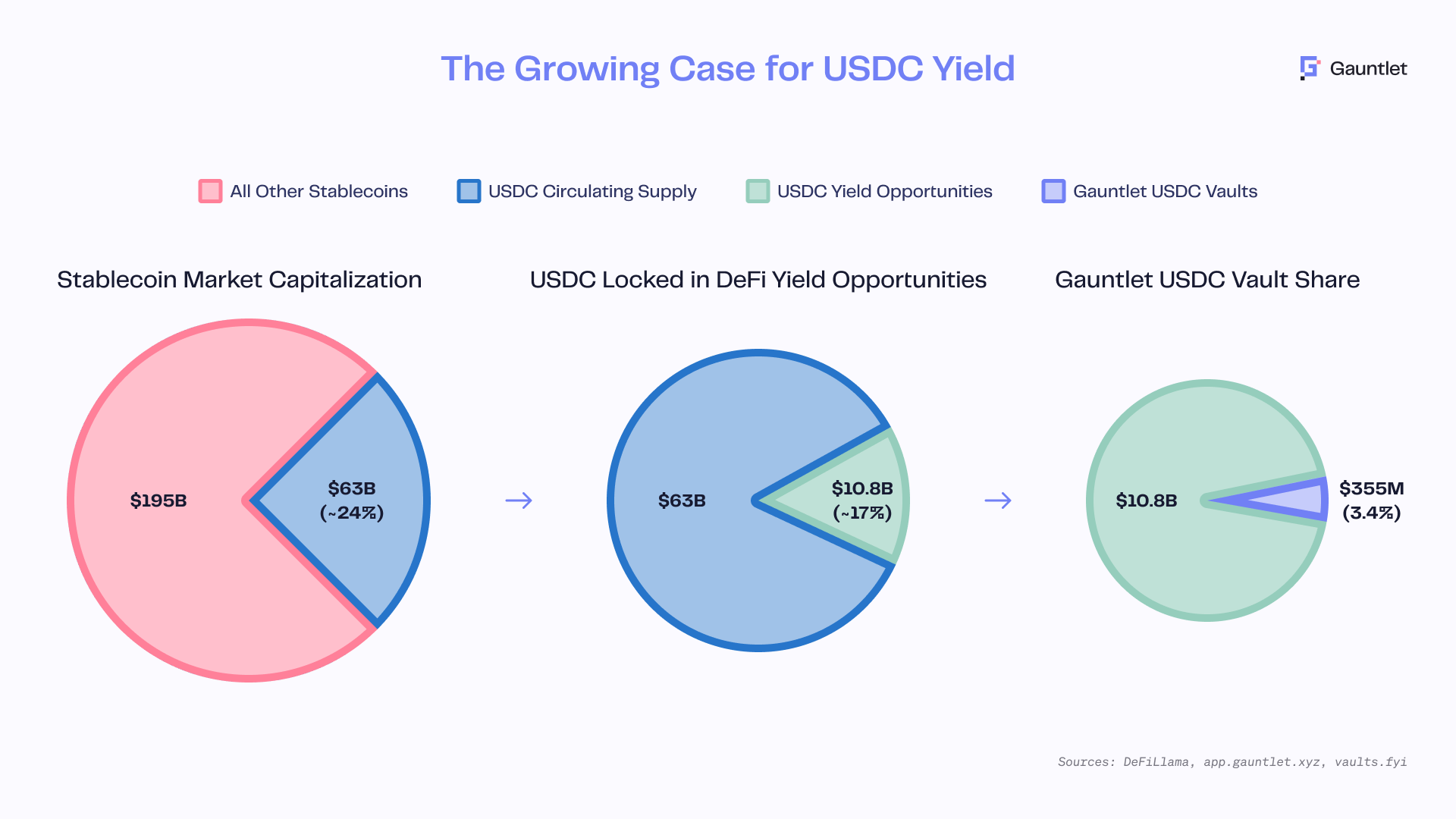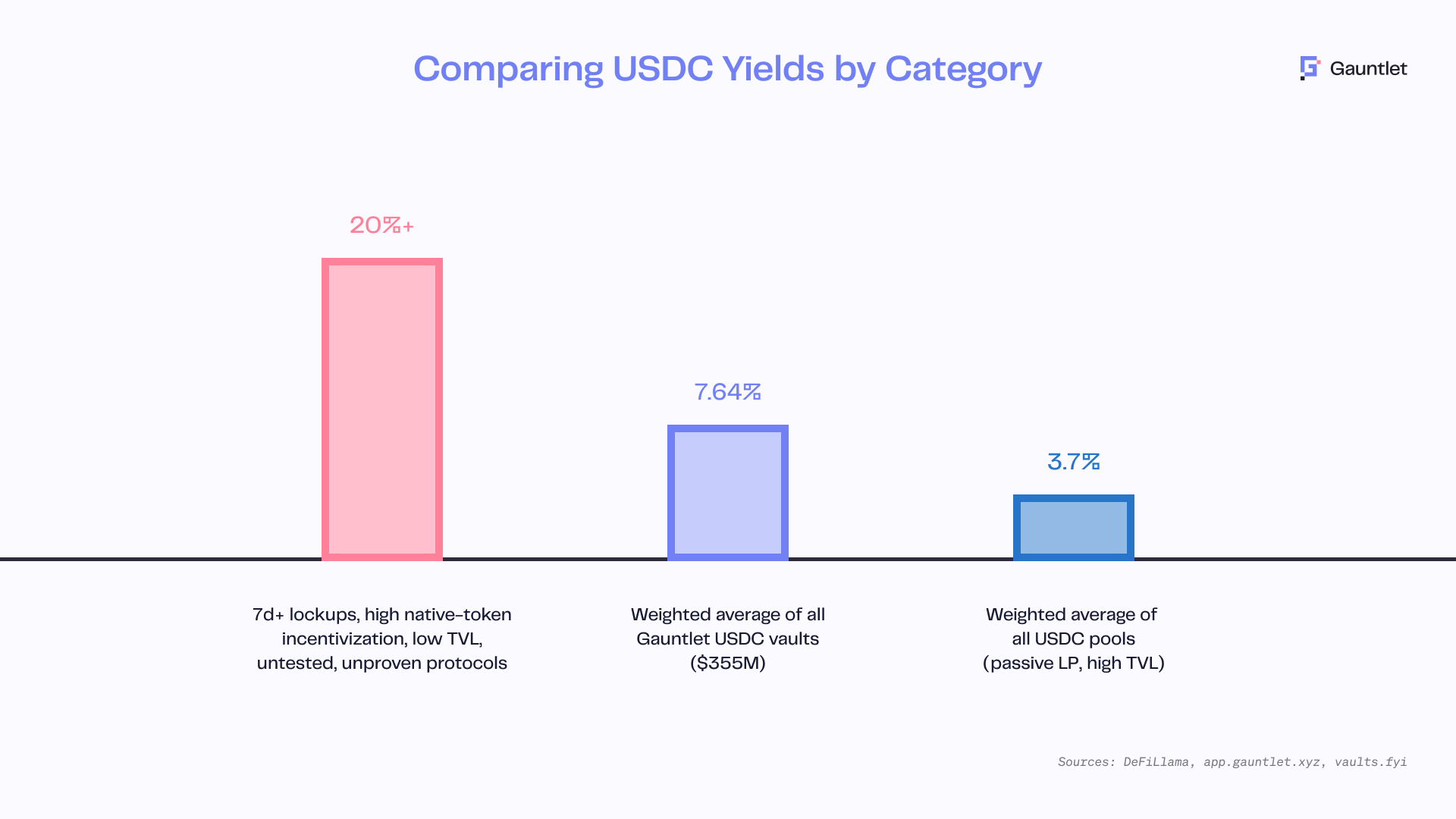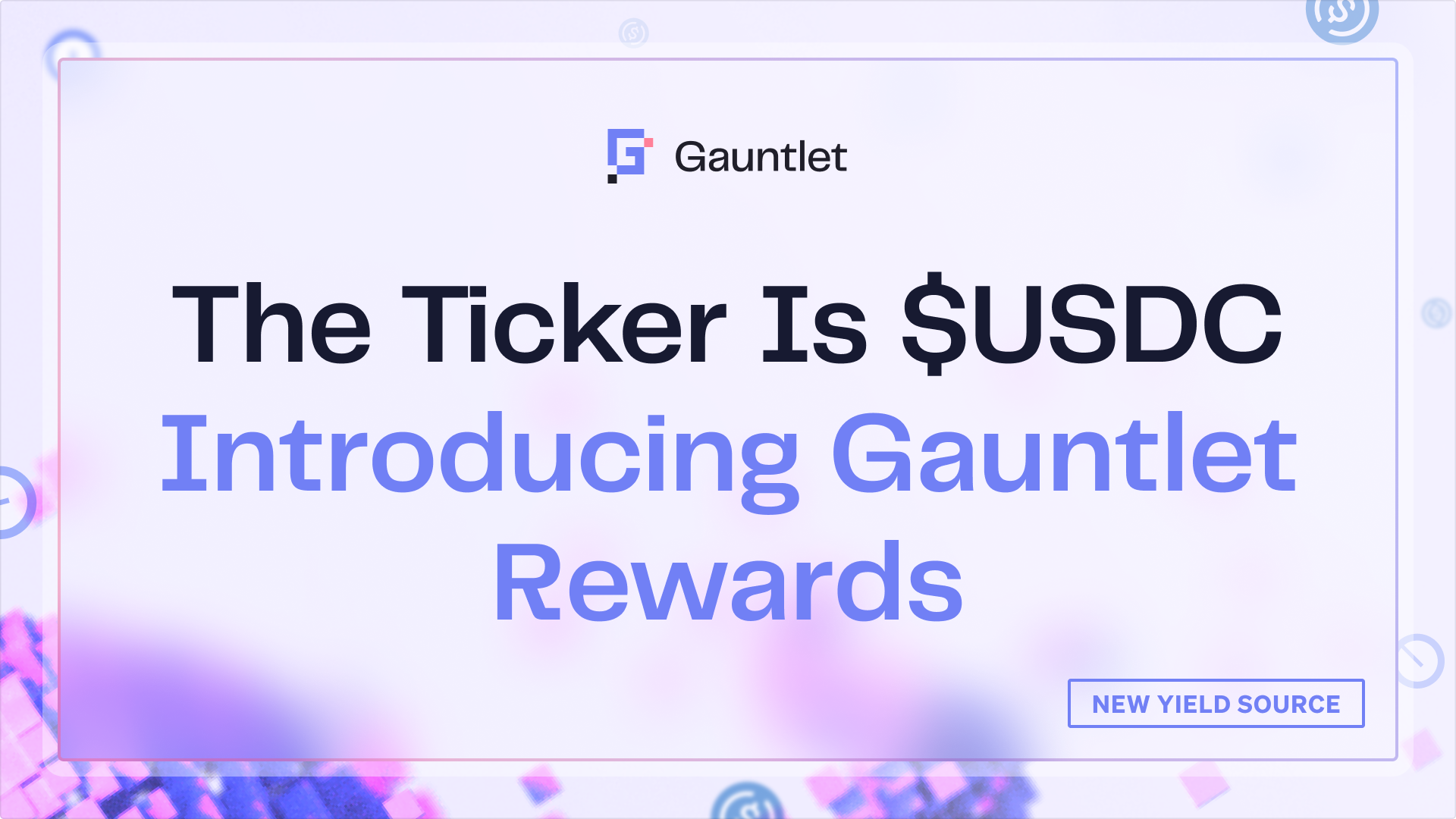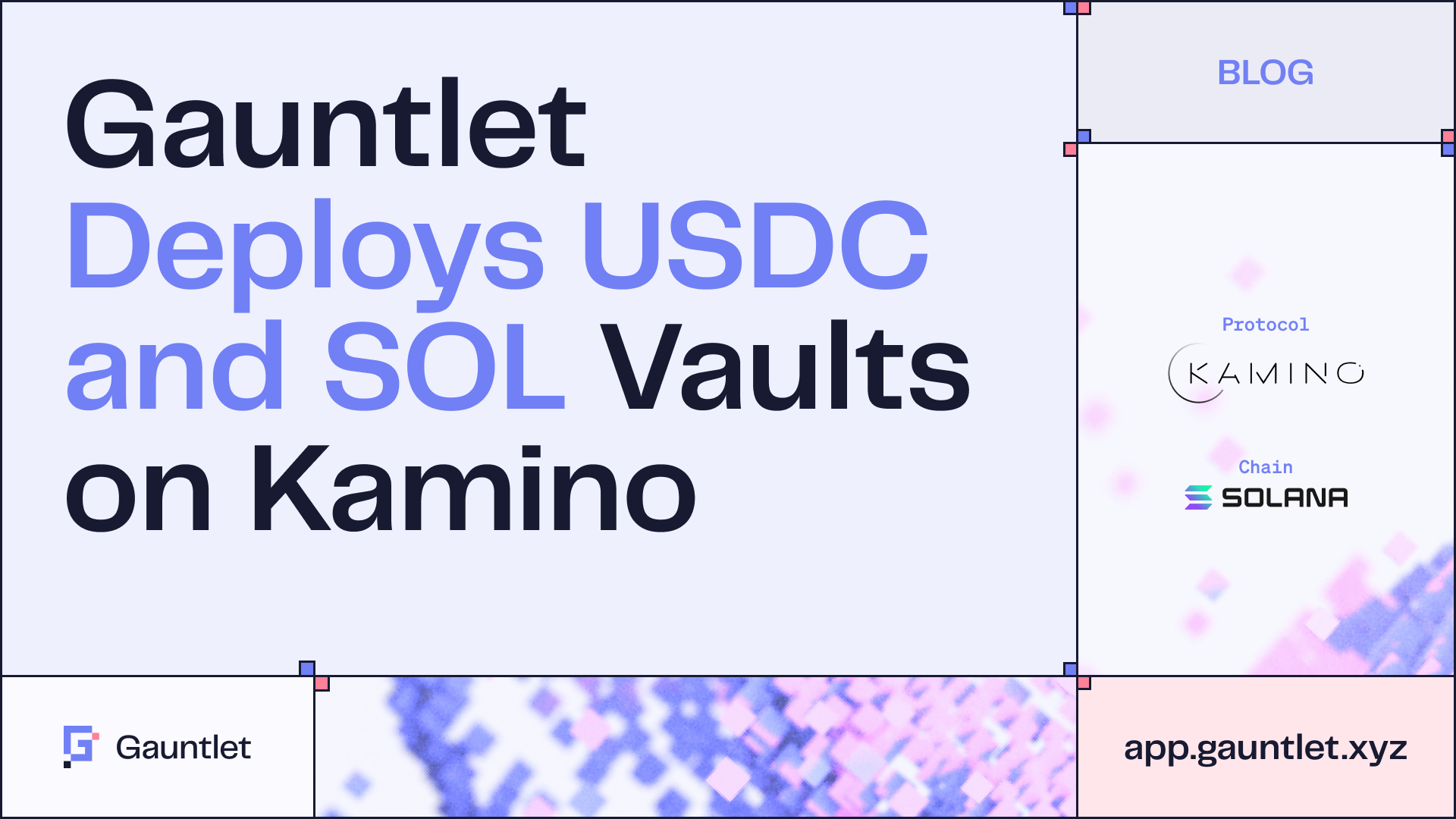Incentives are live on Gauntlet USD Alpha (gtUSDa).
Since launching a few weeks ago, the vault has grown to $5.4 million while returning performance of 11.77%. As we build a strategy worthy of the name Alpha, APYs are now boosted for suppliers.
How it works
USDC incentives on the vault are streamed via Sablier on a recurring basis. This means as long as supply is locked in the vault, rewards can be collected. No manual action needed.
Supply and rewards are non-custodial and can be withdrawn to your wallet at any time. Withdrawals include the current value of supply and rewards collected while assets were locked in the vault.
Check the Gauntlet App to see the base rate on the vault, Gauntlet reward incentivization, and the net rate.
Gauntlet and USDC: a brief history
Our strategies total over $355 million in USDC-denominated Gauntlet vaults, representing nearly 30% of our TVL across protocols, or about 3.4% of all USDC-denominated yield strategies and 0.6% (!) of the sum total of USDC circulating supply according to data from DeFiLlama and vaults.fyi.
Our quants have deployed USDC to incentivize liquidity pool adoption for years as part of our applied research engagements with top DeFi protocols. We’ve written extensively about stablecoins and their role in expanding access to crypto and DeFi. But our connection to Circle’s stablecoin goes deeper than that.

According to DeFiLlama, stablecoin market capitalization currently stands at $258 billion. Of that, USDC’s circulating supply is $63 billion, or just under 25%.
There are over two thousand USDC-denominated yield opportunities across 450+ protocols and over 100 chains, with $10.8 billion TVL. The TVL-weighted average APY: 3.7% across chains. A small subset (<5%) of these opportunities yield over 20% APY, but that often comes at a cost: seven to thirty-day or longer lockup periods, a significant portion of net APY incentivized in a native token (which must be manually redeemed), and low TVL capacity.

Of these USDC yield strategies, Gauntlet counts $355 million TVL in USDC-denominated vaults, or 3.4% of all USDC yield opportunities and 0.6% of all USDC circulating supply.
Built for institutions
Gauntlet USD Alpha is available to everyone. In the weeks ahead, we’ll share more about the range of applicable use cases
- Powering earn programs for wallets, exchanges, and major fintechs
- Optimizing dry powder for cryptonative and traditional funds alike
- Creating new value propositions for crypto card programs
- Incentivizing stablecoin merchant adoption by offering yield integrated with payments offerings
- Supporting creator earnings onchain, trading and other platforms, and reducing the cost of capital for USDC locked on platforms outside of typical DeFi
Job’s not done
In our experience, incentives are a potent-but-delicate tool. Too much, and protocols attract mercenary behavior. Not enough, and supply becomes scarce.
Delivering an alpha strategy on stablecoins worthy of the name means taking advantage of a wider scope of opportunities onchain. Stay tuned, we have more to share in the weeks ahead.
Disclaimer: Performance information is illustrative, and not indicative nor a guarantee of future results. Neither “Gauntlet USD Alpha” nor “gtUSDa” are registered offerings of securities products. Neither Gauntlet nor Aera Protocol are custodians or issuers of gtUSDa or any of the incentives used in the vaults. None of the statements referenced above should be taken to constitute investment, tax, or legal advice. Consult your own advisors as to whether or not participation in this program is suitable for you. Understand all pertinent risks associated with participation in decentralized finance.
- Visit our website to learn more and read our FAQs
- Follow Office Hours, our Telegram Alpha support channel
- See stats for all of our vaults in the Gauntlet App
- Learn more about this and other strategies from VaultBook
- Follow us on social: @gauntlet_xyz on X, @gauntlet on Farcaster, and Gauntlet on LinkedIn
- Oh, and keep up with the intern
Blog
View the full presentation
Read the full paper









